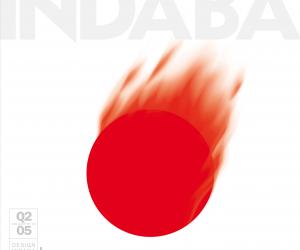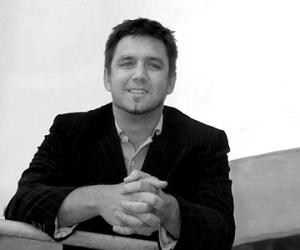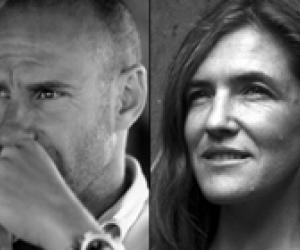First Published in
The morning session started with an alarmingly frank opener by sponsor, BarloWorld CEO Tony Phillips, who spoke about the crisis of leadership in the architectural profession, the lack of physical icons in South Africa, and that South Africa needs "simple, clever interventions that have a big effect on the national consciousness". Bravo to that. Tony also discussed the lack of regional responses in contemporary local architecture, the plethora of "Tuscan" nationwide, particularly in Gauteng, and that the South African Identity needs to be "more than just bush architecture".
A challenging introduction therefore, to the morning's two quite different practitioners, Silvio Rech and Lesley Carstens, and OMM Design Workshop, who both managed to skirt the topic tactfully, with their presentations entitled "Crafted Under African Skies" and "Grounded With High Hopes" respectively.
After a passionate and lengthy slideshow detailing the journey Silvio and Lesley have been through with their evolving craft-based approach to the design of luxury lodges throughout Southern Africa, the audience raised pertinent questions about skills transfer to the newly trained local craftsmen, and, the sustainability of the materials used in these very place-specific structures. Fortunately Silvio's arguments showed that not only are their efforts genuine in their attempt to reconcile appropriate technology for the context, but also in most cases, the aesthetic or "style" as Silvio called it, literally is the only practicable option, and often very beautiful when the formal possibilities of banana leaf ceilings and so on, are pushed to the max.
One unanswered question that relates to the profession in general, is the extent to which - during this hand's-on approach - the architect in fact becomes the contractor? Perhaps this is the only way to make creative and beautiful buildings and is precisely what architecture is missing these days? Another question relating to "Colonialism Again" was unfortunately not well articulated and sidestepped accordingly.
The big question for this reviewer however, is the distinction that the architects themselves have made between "town" and "country" and that their architecture is inherently escapist . To what degree this type of architecture can stand for a South African identity is debatable, although it certainly is symptomatic of our consumerist/tourist driven reality where experiences are almost always "purchased".
Towards the end of their talk it became apparent that the team's approach is also due to be employed in Mexico, which again raises questions about identity, process and product. One would imagine that the process employed in Mexico would yield a Mexican identity naturally, and this is obviously the point as this "craft" process would incorporate local skills and materials, modified and augmented by whatever tricks of the trade Silvio and Leslie have learned along their journey.
Design Workshop on the other hand, have a far more linear approach to the design process that starts with a basic premise or diagram and leads steadily to a conclusion in a much more modern fashion. Andrew Makin and Janina Masojada, co-founders of OMM Design Workshop and part of the Architectural Design team for the newly completed Constitutional Court of South Africa, are arguably the most qualified architects at hand to discuss the notion of an emerging South African identity. However, since they had presented the court last year, were no doubt keen to share their processes employed for the Singita Lebombo Lodge and a private residence in Plettenberg Bay.
In these two projects, Andrew and Janina explained the basic concepts as relating to the diagram of an African Village and the hierarchies, privacy, routes and common spaces implied therein, and how they applied these principles to the planning of the Lodge and House typology respectively. All elements such as "floor", "wall", "column" and so on are clearly articulated in the manner of Le Corbusier, although with a more random "Africanised" rusticity and deliberate emotional "impact" oriented agenda.
Through a considered and sensitive response to their environmental context, these projects seem to melt into the bush and generally make a harmonious and humble impression, thankfully.
During the questions and answers session Design Workshop argued that their work creates a South African Identity via the process in which it evolves, and through its historical/ typological references, as opposed to its specifics - what this leaves in store for a new agenda that captures the spirit of a new national identity is unclear, however, Andrew also made a passionate argument for architecture to perform and that it should be evaluated in terms of the same criteria that other national obsessions such as sport do. An interesting comparison.
OMM Design Workshop had their share of difficult questions too, such as the role of architects in solving the housing crisis, and again, the common gripe that high design for tourists cannot reflect the true national identity, but these questions themselves are missing the point.
We should be grateful that Design Indaba has created a platform for the discussion of South African architectural design, a rare opportunity which not even the national nor provincial institutes of architecture can afford. Architects should also take heart at the degree of interest in the topic from other design professionals, and in the spirit of optimism that architects such as Design Workshop and Silvio Rech conjure.
Next up was architect Eva Jiricna, a most sensitive and prolific London-based exile of the former Soviet occupied Czech Republic. In her talk entitled "Aims And Challenges", Eva related to the notion of National Identity in form and materials, and explained her fascination with modern glass construction as a product of the political changes happening in Czechoslovakia in the early 20th Century. There is no doubt that the brave new world of Russian Constructivism, Bauhaus and Italian Futurism have had a profound influence on Eva's art, although tempered by her own sublime feminism and delicate touch. Eva is not a young lady any more, so it was fascinating to see her genuine appreciation of the laws of nature and its universal truths in describing all that we know to be beautiful, as if with totally fresh perspective.
Petra Blaisse followed, with an extraordinary new theoretical position which is also the name of her firm, entitled "Inside Outside". Definitely Dutch, Petra who has worked with Rem Koolhaas on the Seattle Public Library, specialises in the interface between interior design and landscape design most commonly resolved through the interface known as the common old curtain and window. Simple as this sounds, her work is deeply conceptual and presented the day's first foray into contemporary spatial theory. Petra's investigations into new materials and forms were mind blowing and yielded a number of technical questions and much respect.
The last speaker, Will Alsop, is in all respects the biggest. Simultaneously self-effacing and pompous, in a way that only the truly English can master, Will wowed the delegates with colourful animations and an approach to urban design and architecture that masquerades as naïve, yet in fact reaches deeply into the collective consciousness of Tony Blair's "Young Britain". Will's method includes work-shopping urban design projects with the young, in a batch of bleak post-industrial towns struggling with their own indentity. The results are stunning, if still unbuilt. Somewhat of a maverick in terms of process and publicity, Alsop bypasses the critical role of the press in its appraisals of his schemes by going straight to the movie theatre where his designs are publicly shown in whizz-bang technicolour. South Africa has yet to experience an architect of Will's humour, dexterity and open-mindedness, and this closing talk celebrated the role of architecture and urban design as a vehicle for social change, and as such sat very well in this Indaba's topic of a new SA Indentity.

















